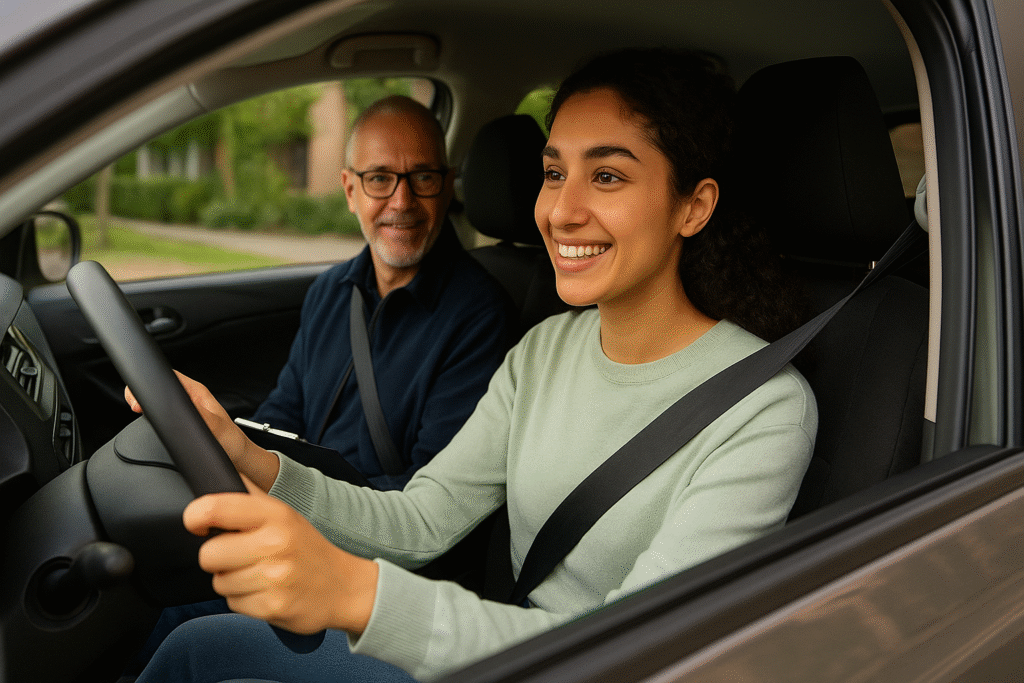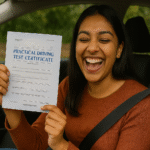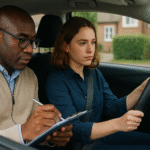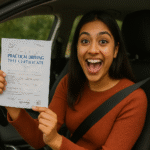Understanding the Key Factors: Is the Practical Driving Test Easy?
Many new drivers often wonder, “Is the practical driving test easy?” The answer can vary significantly depending on a variety of factors. Understanding these factors can help you prepare better and feel more confident on test day.
The Importance of Preparation
One of the key elements that determine whether the practical driving test feels easy or difficult is preparation. Here are a few tips for effective preparation:
- Practice Regularly: Consistent practice develops confidence and reinforces skills.
- Understand Test Routes: Familiarize yourself with common test routes in your area.
- Take Lessons with a Professional: Enlisting a qualified driving instructor can provide personalized guidance and feedback.
Driving Skills and Comfort Level
Your current driving skills play a significant role in how easy you perceive the practical driving test to be. If you’re comfortable behind the wheel and have practiced various driving scenarios, you may find the test easier. Consider these factors:
- Experience with Different Conditions: Riding in diverse conditions (rain, night driving) can boost confidence.
- Control of the Vehicle: You should feel at ease with managing the vehicle’s different functions.
- Response to Challenges: Being able to react calmly to unexpected scenarios can make a difference.
Understanding Test Criteria
Knowing exactly what the examiner will be looking for during your test can also influence your perception of its difficulty. Familiarize yourself with the evaluation criteria, which typically include:
- Observation Skills: Checking mirrors and blind spots before maneuvers.
- Skillful Maneuvering: Ability to turn, parallel park, and change lanes correctly.
- Traffic Rules Compliance: Understanding and adhering to all traffic signs and signals.
Examiner Factors
Another aspect that may affect how easy the practical driving test feels is the examiner’s personality. A friendly and understanding examiner can help put you at ease, while a strict one might add to your nerves. Here are a few tips to manage your interaction with the examiner:
- Stay Calm: Take deep breaths to reduce anxiety before the test.
- Listen Carefully: Make sure to follow any instructions given clearly.
- Ask Questions: If you’re unsure about something, don’t hesitate to ask the examiner for clarification.
Building Confidence
Confidence plays a critical role in how you perceive the ease of your practical driving test. Here are a few strategies to build your confidence:
- Mock Tests: Simulate the test with a friend or instructor to get a real feel for the pressure.
- Positive Visualization: Picture yourself successfully completing the test before you begin.
- Support Network: Surround yourself with supportive friends or family to encourage you.
Final Thoughts
Ultimately, whether the practical driving test feels easy or not is subjective. It heavily relies on individual preparation, skill level, and mindset. If you approach your test with adequate preparation and a positive attitude, you are likely to find it more manageable. Remember, this test is not just a hurdle but an important step toward gaining independence on the road. Approach it with the right mindset, and you just might find it easier than you initially believed.
Common Challenges Faced During the Practical Driving Test
Preparing for a practical driving test can be a nerve-wracking experience. Many learners find it challenging to navigate through the requirements of the test while remaining calm. Understanding what common hurdles await can help you better prepare and boost your confidence. Here are some of the most frequent challenges faced during the practical driving test.
Accuracy in Driving Maneuvers
One of the most significant challenges is executing driving maneuvers accurately. Commonly tested actions include:
- Parallel parking
- Three-point turns
- Hill starts
Many learners struggle with these tasks due to lack of practice or anxiety. It’s essential to practice these maneuvers multiple times with a qualified instructor or a trusted friend. Practicing in different environments will also help you adapt to various driving conditions.
Adhering to Traffic Regulations
Understanding and obeying traffic laws can seem daunting, especially when under the scrutiny of an examiner. Some key regulations include:
- Yielding to pedestrians
- Following speed limits
- Using signals appropriately
Failing to comply with these laws can lead to an immediate failure in your driving test. To avoid this, make it a point to study the rules and regulations thoroughly. Take practice tests, read the handbook provided by your driving authority, and consider taking a mock test to reinforce your knowledge.
Managing Test Anxiety
Test anxiety is another crucial factor that can hinder your performance. Feeling overwhelmed can lead to mistakes that you would otherwise avoid. Here are a few tips to help manage anxiety:
- Deep breathing exercises
- Positive visualization techniques
- Arriving early to the test center
Calming your nerves and focusing on the test can improve your concentration while driving.
Instructor Feedback
During the test, the examiner will be observing your every move and taking notes. Some learners may find it challenging to absorb instructor feedback. Understanding their expectations and how to align with them is vital. For instance:
- Make sure you check your mirrors before any maneuver.
- Show confidence when changing lanes.
- Use hand signals when necessary.
Getting familiar with specific terminologies and cues used by examiners can provide an edge. Ask your instructor for their strategies and what they find to be the most critical focus areas.
Reacting to Unforeseen Circumstances
Driving is unpredictable, and the examiner may simulate different scenarios during the test. These could include:
- Encountering a pedestrian suddenly in front of your vehicle
- Responding to road signs that require quick decision-making
- Dealing with other drivers who may not follow the rules
The key here is to maintain composure. Practice adapting to changing conditions during your lessons so that you can react promptly when it counts.
Vehicle Familiarity
Driving a vehicle that is unfamiliar can add to the challenges faced during the test. Differences in pedal sensitivity, brake response, or turning radius might throw off your performance. To avoid this issue:
- Use the same car for practice that you will drive for the test.
- Familiarize yourself with the location of controls like lights, windshield wipers, and the horn.
Your comfort level with the vehicle plays a significant role in your confidence and overall performance during the test.
By anticipating these common challenges and preparing accordingly, you can improve your chances of passing the practical driving test. Remember to remain focused, practice regularly, and stay calm. Best of luck on your driving journey!
Tips and Tricks to Prepare for Your Practical Driving Test
Getting ready for your practical driving test can be daunting, but with the right strategies, you can turn that anxiety into confidence. While many people ponder the question, “Is the practical driving test easy?” the truth is that preparation plays a significant role in how well you perform. Let’s dive into some essential tips and tricks that will help you ace your driving test.
Understand the Test Structure
Before you begin your preparations, it’s crucial to familiarize yourself with the format of the driving test. Knowing what to expect can alleviate some of your nervousness. The practical driving test typically includes the following components:
- Vehicle safety checks: You’ll be asked questions about the vehicle’s basic functions (e.g., lights, indicators, wipers).
- Driving maneuvers: Expect to perform various maneuvers such as parallel parking, reversing, and three-point turns.
- Road driving: This part includes driving on different types of roads and obeying traffic signs and signals.
- Independent driving: You may need to follow directions given by a sat-nav or follow road signs.
Practice, Practice, Practice
One of the most effective ways to prepare for your test is through consistent practice. Consider these actions:
- Take lessons with a professional instructor: A driving school offers structured lessons tailored to your skill level.
- Practice in various conditions: Drive in different weather conditions and at various times of day to gain experience.
- Use a practice car: If you have access to a car similar to the one you’ll take for the test, practice with it as much as possible.
Learn the Rules of the Road
A solid understanding of traffic laws is fundamental. Refresh your knowledge of road signs, right-of-way rules, and speed limits. You can use the following strategies to reinforce this knowledge:
- Read the driver’s handbook: Each region may have slightly different laws, so consult your local handbook.
- Take practice quizzes: Online resources and apps offer quizzes to test your knowledge and readiness.
Mock Tests
Conducting mock driving tests can be highly beneficial. Here’s how to organize them:
- Simulate the test experience: Have a licensed driver observe you as you drive through typical test routes while mimicking the examiner’s requests.
- Request feedback: After your mock test, ask for specific feedback on areas you can improve.
Focus on Your Weaknesses
Everyone has skills they excel in and areas they struggle with. Use feedback from practice sessions to pinpoint where you need additional work. Make sure to dedicate extra time to those aspects:
- Identifying blind spots
- Executing parallel parking
- Properly merging into traffic
Relaxation Techniques
Staying calm during your test is essential. Consider these relaxation techniques:
- Practice deep breathing: Take deep breaths to help ease your nerves before the test.
- Visualize success: Picture yourself driving confidently and successfully passing the test.
Have Your Documents Ready
Before you head to your driving test, ensure you have all necessary documents to avoid last-minute stress:
- Valid learner’s permit or provisional license
- Proof of identity (such as a passport)
- Payment receipt for test fees
Day of the Test
On the day of your driving test, try to keep these tips in mind:
- Arrive early to avoid rushing and to familiarize yourself with the testing area.
- Stay hydrated and eat a light meal to keep your energy up.
- Be polite and respectful to the examiner; it sets a positive tone.
Preparing for your practical driving test doesn’t have to feel overwhelming. By following these tips and remaining dedicated to your practice, you can enhance your skills, build confidence, and improve your chances of success. Remember, the more prepared you are, the easier the test will feel.
Real-Life Experiences: Success Stories and Struggles with the Practical Driving Test
When learning to drive, many individuals approach their practical driving test with a mixture of excitement and anxiety. This test is a crucial step on the road to gaining independence through driving. The reality is that experiences can vary widely. Some people find the practical driving test to be an easy hurdle to overcome, while others face considerable challenges. Here, we explore both success stories and struggles related to the practical driving test in real-life scenarios.
Success stories often shine a light on individuals’ determination and preparation. For many, the journey begins with lessons from an experienced instructor. Taking lessons can significantly enhance driving skills. A structured plan often helps learners avoid unnecessary stress. Here are some common success strategies:
- Practice Regularly: Consistent driving practice leads to greater confidence behind the wheel.
- Mock Tests: Simulating the test environment with mock driving tests can prepare candidates for the real deal.
- Understand the Test Route: Familiarity with the test area can reduce anxiety and improve performance.
- Positive Mindset: Maintaining a positive attitude plays a critical role in success; belief in oneself is vital.
Many candidates share their success stories filled with joy and relief. For example, Sarah, a recent candidate, recalls how she overcame her initial nervousness. With encouragement from her instructor, she took her time to master parallel parking, a skill that once seemed daunting. On her test day, she felt prepared, and passing her practical test was a moment of great pride.
Another inspiring tale is that of Lucas, who initially struggled to coordinate using various controls in the car. He faced some setbacks in his earlier attempts but persisted. Lucas invested extra hours in practice, focusing on areas that needed improvement, like navigating roundabouts and traffic signals. After several sessions dedicated to these challenges, he finally passed the test, proving that perseverance pays off.
While these success stories are uplifting, not everyone has a straightforward path to success. Struggles during the practical driving test are quite common, especially when nerves kick in on the day of the test. Candidates often feel pressure and anxiety, leading to performance issues that result in a failed attempt.
- Common Triggers of Test Anxiety:
- Fear of making mistakes.
- Unfamiliar test routes.
- Pressure from instructors or family.
- Time constraints during the test.
Tina’s experience highlights some of these challenges. Although she was well-prepared, her nerves got the better of her on the test day. She felt overwhelmed during the assessment, leading to a series of small mistakes that ultimately resulted in not passing. After reflection, she decided it was essential to work on her confidence and took more practice tests before attempting again.
Logging hours behind the wheel does not guarantee passing the test, as Richard learned. Despite being a capable driver, his anxiety about the test environment clouded his judgment. On his first attempt, alongside his nerves, he made an error during a parallel parking maneuver, which resulted in failure. Recognizing that he needed to address his fear, he practiced defensive driving and worked on staying calm under pressure. Upon his second attempt, he passed with flying colors.
It’s essential to acknowledge that the road to passing the practical driving test involves a blend of skill, confidence, and sometimes sheer willpower. What works for one person may not work for another; thus, tailoring one’s approach makes all the difference. Here’s a brief overview of common outcomes:
| Outcome | Experience Level | Preparation Techniques |
|---|---|---|
| Passed Unsuccessfully | Low | More practice needed, mock tests suggested |
| Passed with Ease | Moderate to High | Regular lessons, familiarization with routes |
| Re-attempts Required | Varied | Focused practice on areas of struggle |
In essence, real-life experiences around the practical driving test showcase a journey filled with learning opportunities, stress relief techniques, and personal achievements. For anyone preparing for the practical driving test, remember: every experience adds to your journey as a confident driver.
The Importance of Practice: How Familiarity Impacts Test Performance
When it comes to taking tests or assessments, practice can make all the difference. The more familiar you are with the content or skills being tested, the more comfortable and confident you will feel. This principle holds true across various fields, including driving, academics, and professional settings. Familiarity not only boosts your knowledge but also impacts how well you perform during the actual test. Let’s explore how practicing effectively influences test performance.
One of the primary ways that familiarity affects test performance is through anxiety reduction. When you’re well-practiced, you tend to feel less anxious about the upcoming challenge. For instance, a student who has rehearsed for weeks before a math exam is likely to feel more at ease than one who hasn’t. This confidence comes from knowing what to expect and feeling prepared for the questions or situations that may arise.
In driving, the scenario is quite similar. A learner who has spent hours behind the wheel, practicing various maneuvers, will approach their driving test with more confidence compared to someone who has had limited practice. Familiarity with the vehicle’s controls, road signs, and traffic rules allows the driver to focus on the test instead of panicking over uncertainties.
To illustrate the impact of practice on performance, consider the following benefits:
- Improved Skill Mastery: Regular practice helps solidify your skills. In driving, this could mean mastering parallel parking or lane changes, leading to smoother execution during the test.
- Better Time Management: Familiarity allows you to gauge how long tasks will take. For example, a student who has practiced timed mock tests will be better at pacing themselves on the real exam.
- Enhanced Problem-Solving Abilities: The more scenarios you visualize during practice, the better you become at navigating unexpected situations. This is particularly important in driving tests where an unexpected obstacle may arise.
Effective practice is not just about repetition; it also involves understanding the right techniques. Here are some advanced strategies for making practice count:
- Feedback Loop: After practicing, seek constructive feedback. For drivers, a qualified instructor can provide insights into areas of improvement. For students, discussing answers with peers or educators can clarify misunderstandings.
- Simulated Environments: Create practice scenarios that closely mimic the actual test. For learners planning for a driving test, practicing in various conditions (such as night driving or in rain) can be immensely beneficial.
- Diverse Practice Methods: Incorporate different forms of practice. For example, alternate between behind-the-wheel practice and studying the rules of the road. This holistic approach can enhance your understanding and recall.
Tracking your progress is another key aspect of effective practice. Consider keeping a log of your practice sessions, noting which areas you find easy and which require more focus. This can help direct your practicing time efficiently and systematically. Here’s a simple table to illustrate how you might track your practice:
| Date | Practice Area | Confidence Level (1-10) | Notes |
|---|---|---|---|
| Week 1 | Parallel Parking | 5 | Struggled to line up correctly |
| Week 2 | Lane Changes | 7 | Much smoother than last week |
| Week 3 | Road Signs | 9 | Recognized all signs in practice |
This method not only brings awareness to your strengths and weaknesses but also serves as motivation as you see improvements over time. In essence, the more you practice, the easier the test will feel on the day of reckoning.
Additionally, it’s vital to allocate time wisely for varied, focused practice sessions. Cramming all your practice into one week before the test may lead to stress and burnout. Instead, embrace consistent, spaced-out practice over several weeks or months, which allows your brain to digest and retain information properly.
Ultimately, the impact of practice and familiarity on test performance cannot be overstated. Whether you’re preparing for a driving test, an academic exam, or any other challenging assessment, remember that consistent practice reaps rewards. As you refine your skills and build confidence, you set yourself up for success. So, whether behind the wheel or with a textbook, dedicate that time to practice, and watch your performance soar.
Key Takeaway:
When contemplating whether the practical driving test is easy, several factors come into play that can significantly influence your experience and outcome. Ultimately, the ease or difficulty of this test often varies from one individual to another. Understanding these key elements can help you gauge what to expect in your journey toward getting your driver’s license.
First, it’s important to recognize that common challenges can arise during the practical driving test. Many test-takers struggle with parallel parking, merging into traffic, and obeying road signals. Anxiety can also play a significant role, as nerves might affect concentration and performance. Acknowledging these challenges is the first step toward overcoming them.
Preparation is crucial. To improve your chances of passing, consider utilizing practical tips and tricks. Practice driving in various conditions, such as busy streets and highways. Ideally, you should take lessons with a qualified instructor who can provide valuable feedback. Creating a checklist of essential maneuvers and scenarios you need to master can help you stay organized in your study and practice sessions.
Furthermore, real-life experiences from others can offer invaluable insights into the practical driving test. Many individuals share their success stories, emphasizing the role of adequate preparation, while others discuss their struggles, pinpointing momentary lapses of concentration or unexpected road situations that caught them off guard. Learning from these experiences can equip you with strategies for handling similar scenarios during your own test.
The importance of consistent practice cannot be overstated. Familiarity with your vehicle, local roads, and test routes directly impacts your performance. The more comfortable you are behind the wheel, the easier the driving test will feel. Regularly practicing maneuvers and scenarios encountered during the test will build your confidence and enhance your skills.
Whether the practical driving test is easy or difficult is subjective and relies heavily on preparation, experience, and practice. By understanding the challenges, investing time in learning, and applying effective strategies, you can set yourself up for success and navigate the road to obtaining your driver’s license with confidence.
Conclusion
As you reflect on whether the practical driving test is easy, it’s important to remember that the experience varies for everyone. Understanding the key factors involved, such as the specific requirements of your local test and your personal driving habits, lays the groundwork for a successful outcome. Many new drivers face common challenges, including anxiety, unfamiliarity with test routes, and difficulty mastering tricky maneuvers. Recognizing these challenges is the first step to overcoming them.
Equipping yourself with effective tips and tricks can significantly boost your confidence. From practicing in varied traffic conditions to simulating test scenarios with an instructor, every bit of preparation counts. Real-life experiences shared by fellow drivers showcase that while some have sailed through their tests, others encountered obstacles that taught them valuable lessons about resilience and persistence.
Ultimately, the importance of practice cannot be overstated. Familiarity with your vehicle, the driving routes, and the nervousness of the test itself plays a crucial role in how well you perform. Whether you find the driving test easy or challenging, it’s the preparation and experience gained along the way that truly matters. Embracing each driving lesson, acknowledging your growth, and maintaining a positive outlook will not only help you conquer the test but also make you a safer, more confident driver on the road ahead. So dive into your preparation with determination, and remember that each person’s journey is unique, leading to different outcomes and experiences.






Leave a Reply